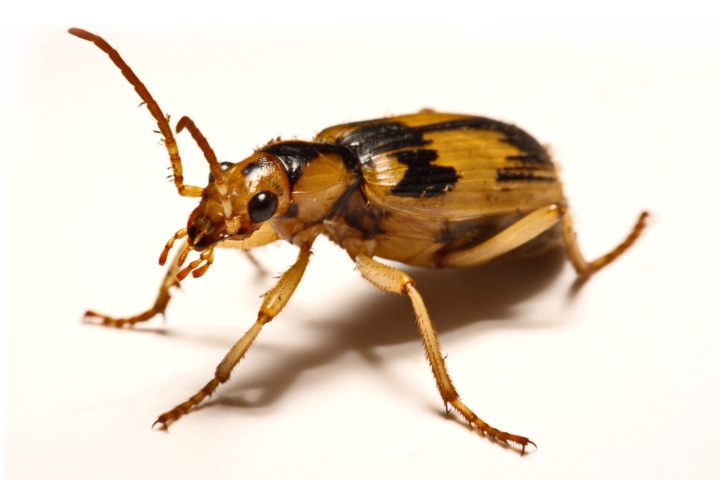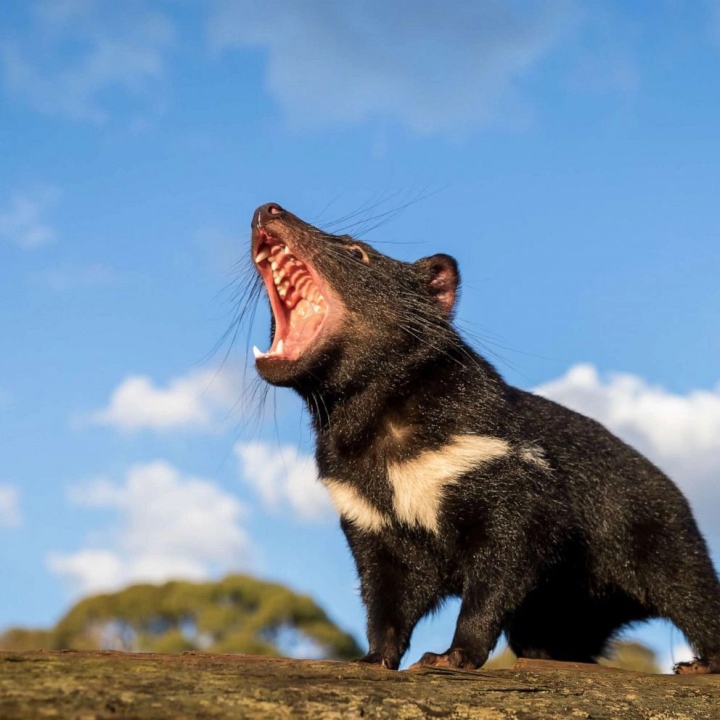Instead of using body strength, many of the world's most "smelly" animals have used scent to attack their prey, scaring everyone.
Faced with the onslaught of powerful prey, many of the world's most "smelly" animals have had to use the sole power of scent to protect themselves. Thanks to that, many species narrowly escaped death.
Bombardier beetle
Bombardier beetle's body possesses two chemicals called hydroquinone and hydrogen peroxide, which are used in the hair dye and beauty industry. When attacked or hunted, Bombardier beetles will mix these two chemicals together, forming sticky mucus with an extremely unpleasant odor.
Although, the strength of this animal is not great enough to kill or threaten its prey. But it is the scent of the body that frightens the enemy when approaching.

The beetle is small, but has a scent that scares many prey.
Wild hoof chicken
Wild clawed chickens or Stinkbirds are found in the jungle area along the Amazon River. One thing that helps this animal escape from humans is that the meat has a terrible smell. Therefore, those who can eat the meat of wild hoofed chickens must be people who are not afraid of the smell.
This chicken has a body length of about 65 cm, a long neck, a small head, a blue face, and red eyes. At the same time, they also have an abnormal digestive system and have another name based on the bad smell on the body, the mink.
Tamandua tetradacty
Tamandua tetradacty is an anteater mammal found in several South American countries such as Argentina, Brazil and Uruguay. This animal often preys on jaguars when hungry.
When attacked, Tamandua tetradactyla will emit a terrible odor from the anal glands under the tail, causing prey to stay away. We can totally smell them if we stand about 50 meters away.
Weasel Gulo
The Gulo weasel is also known by another name, the skunk bear. Because of the appearance of this animal, it resembles a carnivorous bear and has an unpleasant odor. Northern, subarctic and alpine taiga and alpine tundra in the Northern Hemisphere are the habitat of the Gulo weasel.
Demon Mouse Tasmani
In order to protect itself from other animals, the Tasmani demon rat will release a strong odorous substance accompanied by a loud cry. At the same time, this demon rat can eat most types of corpses, including bones, due to its sharp teeth and strong jaws.

Tasmani demon mouse is known as the devil.
Tasmani demon rats often gather together in search of prey, making a lot of growls and screams! The area of operation is mainly located in the canyon. In particular, Tasmani often eat corpses to help reduce pollution and reduce waste.
Musk beef
Musk cows live in the Arctic, possessing a "sweet scent" that makes the opponent feel nauseous immediately when smelling it. During the mating season, bulls release a foul-smelling liquid from a special gland near the eye. Then, this liquid will cling to the hair to create a bad smell to attract cows.
In the summer, musk cows usually live in wet areas, like river valleys. Their diet includes arctic willow grass, lichens and moss under the snow. When food is plentiful, this cow will eat more succulent and nutritious grasses.
Sea rabbit
Sea rabbits use purple water droplets secreted from the body's fluid glands to spread to the surrounding environment and paralyze the prey's olfactory nerve. When meeting an enemy, this species will secrete purple fluid to escape from the enemy. Another toxic gland is located in front of the outer membrane, secreting a milky, acidic fluid with an unpleasant odor.
- The poor dog is paralyzed and can’t stand up crying for everyone’s help and doesn’t leave him in this helpless moment
- The moment when the brave loyal dog fought to the last moment sacrificing himself to protect the safety of his owner from the attack of venomous snakes made us extremely emotional and couldn’t hold back his tears me
- The touching story of bubbles and her puppies will probably bring tears to your eyes
- Top 12 Animals With The Longest Tongue On Earth
- Top 15 animals with the most unique eyes in the world






